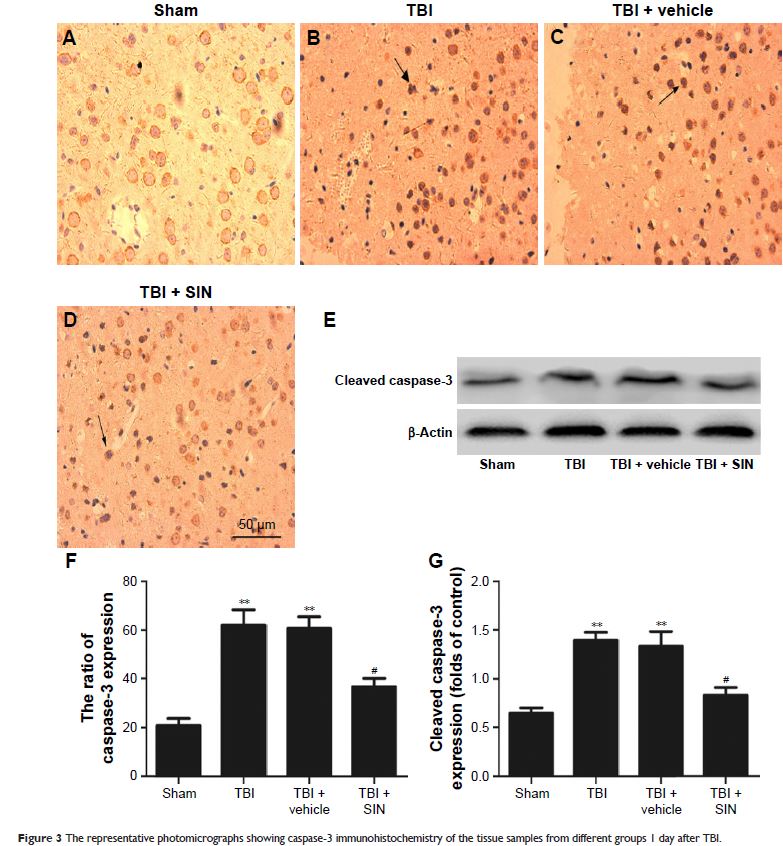9 0 8 0 2
论文已发表
注册即可获取德孚的最新动态
IF 收录期刊
- 2.6 Breast Cancer (Dove Med Press)
- 3.9 Clin Epidemiol
- 3.3 Cancer Manag Res
- 3.9 Infect Drug Resist
- 3.6 Clin Interv Aging
- 4.8 Drug Des Dev Ther
- 2.8 Int J Chronic Obstr
- 8.0 Int J Nanomed
- 2.3 Int J Women's Health
- 3.2 Neuropsych Dis Treat
- 4.0 OncoTargets Ther
- 2.2 Patient Prefer Adher
- 2.8 Ther Clin Risk Manag
- 2.7 J Pain Res
- 3.3 Diabet Metab Synd Ob
- 4.3 Psychol Res Behav Ma
- 3.4 Nat Sci Sleep
- 1.9 Pharmgenomics Pers Med
- 3.5 Risk Manag Healthc Policy
- 4.5 J Inflamm Res
- 2.3 Int J Gen Med
- 4.1 J Hepatocell Carcinoma
- 3.2 J Asthma Allergy
- 2.3 Clin Cosmet Investig Dermatol
- 3.3 J Multidiscip Healthc

青藤碱通过对线粒体途径的作用减少创伤性脑损伤小鼠的神经元细胞凋亡
Authors Fu C, Wang Q, Zhai X, Gao J
Received 18 October 2017
Accepted for publication 22 November 2017
Published 5 January 2018 Volume 2018:12 Pages 77—84
DOI https://doi.org/10.2147/DDDT.S154391
Checked for plagiarism Yes
Review by Single-blind
Peer reviewers approved by Dr Rammohan Devulapally
Peer reviewer comments 3
Editor who approved publication: Professor Manfred Ogris
Background: Sinomenine
(SIN) has been shown to have protective effects against brain damage following
traumatic brain injury (TBI). However, the mechanisms and its role in these
effects remain unclear. This study was conducted to investigate the potential
mechanisms of the protective effects of SIN.
Methods: The weight-drop model of TBI in Institute of Cancer Research (ICR)
mice were treated with SIN or a vehicle via intraperitoneal administration 30
min after TBI. All mice were euthanized 24 h after TBI and after neurological
scoring, a series of tests were performed, including brain water content and
neuronal cell death in the cerebral cortex.
Results: The level of cytochrome c (Cyt c ), malondialdehyde (MDA),
glutathione peroxidase (GPx) and superoxide dismutase 1 (SOD) were restored to
some degree following the SIN treatment. The SIN treatment significantly decreased
caspase-3 expression and reduced the number of positive cells by terminal
deoxynucleotidyl transferase-mediated dUTP nick end-labeling (TUNEL) assay and
improved the survival of neuronal cells. Additionally, the pretreatment levels
of MDA were restored, while Bax translocation to mitochondria and Cyt c release into the cytosol
were reduced by the SIN treatment.
Conclusion: SIN protected neuronal cells by protecting them against apoptosis
via mechanisms that involve the mitochondria following TBI.
Keywords: sinomenine, traumatic brain injury, apoptosis, mitochondria
